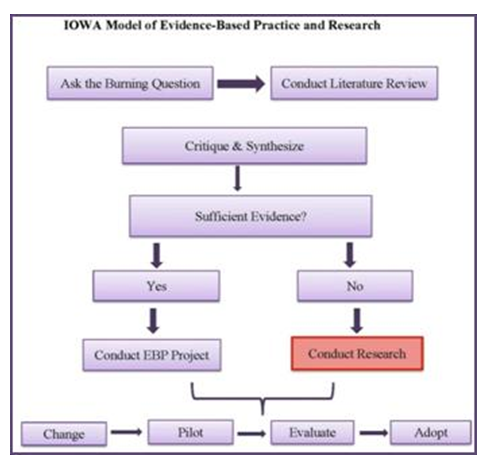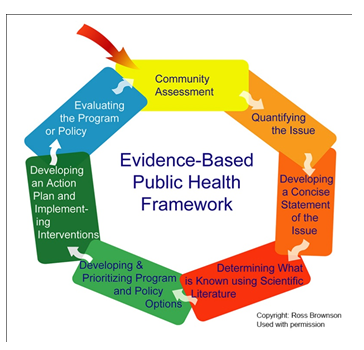The Evidence Based Practice On Fall Precaution Discussion
The current study focuses on the aspect of evidence based practice for prevention of fall of the elderly patients in the hospital ward. There is a need to adopt measures for lowering of accidents, which occurs due to the falling of elderly patients aged 65 and above. Thus, reports and data have shown that almost 30% of the accidents could be accounted to such falling of the aged in the medical ward. The assignment provides a detailed idea entailing the problem, the strategies undertaken for the implementation of the objectives The Evidence Based Practice On Fall Precaution Discussion.
ORDER YOUR PAPER HERE
The assignment focuses upon the benefits provided by the Evidence Based Model (EBP) in a medical ward. It aims at improving as well as standardizing the methods practiced in the medical wards. The implementation of the EBP model can help in reducing the time spent in the treatment of the elderly in the medical ward. Moreover, the same could potentially reduce injury from fall risk manifold times.
One of the major causes of injury in the current decade within the older population has been from falling. In this context, the figures and statistical data received have pointed out at fall to be the most common cause of injuries within the age group. Reports have shown that in the year 2001, almost 2.7 million adults in the United States have been admitted to hospitals for treatment of non-fatal injuries (Boltz et al. 2016)The Evidence Based Practice On Fall Precaution Discussion. The occurrence of such falls has often been seen to result in injuries to vulnerable parts of the body including the head (Hshieh et al. 2015). The study aims at designing suitable Evidence based practice model (EBP) aiming towards the incorporation of physical exercises in the daily care routine of patients. It also aims at providing care treatments at low cost, which may prevent the hospital bills from rising. Thus, inculcation of light exercises such as stretching and balancing may allow more flexibility to the patients. For this purpose, 35 odd numbers of patients had been selected by the nurse belonging to lower risk fall group.
Statistical reports have suggested that 85.3 % of the injuries in Singapore have been due to falling down accidentally. As suggested by Clegg et al. (2013), the population of the senior citizen in Singapore is gradually increasing The Evidence Based Practice On Fall Precaution Discussion.
For the implementation of the EBP plan, there is a need to design a model based on which the change can be implemented, such as the IOWA model. As per the model, implementing physical exercises can be a convenient alternative to medicines. The analysis done based on the IOWA model, suggested that introduction of physical exercises along with anti-slip footwear, supply of sticks for support during walking could reduce the risk of fall. As suggested by Clegg et al. (2013), exercise such as balance training and stretching can improve the resistance in individuals by making muscles stronger. Some of the stretching exercises, which could be implemented by the nurse for the fall risk patients, are reclining pigeon, standing triceps stretch, butterfly stretch.
However, for that purpose, the nursing staff would need to select a specific patient group. The nurse here can choose from the ones who are at lower risk of fall or in mentally sound conditions. Thus, a target group of 35 participants had been selected by the nurse with better physical and mental control for participating in the care regimen. Thus, once the goal is agreed upon the by the hospital staffs, permission needs to be taken from the stakeholders as well. Moreover, campaigns could be organized for educating the masses on the benefits of physical exercises. The Evidence Based Practice On Fall Precaution Discussion

Figure 1: IOWA model
(Source: Buckwalter et al. 2017 )
The successful implementation of the proposed plan helps in reducing the number of falls. It also helps in controlling the severity of the injury inflicted because of such fall among the elderly. The impacts or the desired changes can be evaluated with the help of a number of methods such as conducting a risk assessment by the nursing management (Karlsson et al. 2013)The Evidence Based Practice On Fall Precaution Discussion. Additionally, implementation of light exercises by the nursing professional, such as balance training for 2 hours daily can prevent accidental fall in the elderly. Moreover, providing physiotherapy to the patients by the daily care nurses can help in relieving the painful conditions. For the mitigation of the training requirements, a group of 10-12 nurses could be employed for designing specific exercises. Thus, following the IOWA model for designing the treatment plan can be useful in this regard.
The presence of co-morbid conditions would mean that the nurse has to take into consideration additional concerns while designing the training exercises. Thus, unavailability of sufficient information regarding patient health can act as a huge deterrence for the nursing professionals (McClure et al. 2009). However, as asserted by Canning et al. (2015), lack of awareness regarding care plans such as EBP can prevent the nurses from implementing the exercises, which may reduce the risk of fall among elderly patients.
Moreover, the barriers can be further grouped into a number of categories such as individual, environmental and organizational categories. Thus, lack of sufficient support from the management and staff can hinder the attainment of the objectives. Moreover, at the individual and the organizational level lack of teamwork can act as a demotivation (Gillespie et al. 2009)The Evidence Based Practice On Fall Precaution Discussion. It has been seen particularly seen that during the shuffling of staffs the midwives are often not willing to share adequate information with the enrolled nurses. This can also serve as a barrier to the achievement of the objective along with time liabilities also serve as another constraint. Moreover, lack of sufficient support from the patient and their respective families often results in ethical dilemmas.
Conclusion
Community-based programs were found to be useful in reducing the risk of such accidents. Additionally, a risk assessment conducted from time to time in order to figure out ones mostly at the risk of injury from falling. The intervention and strategies for management of such accidents have been emphasized over here in order to arrive at a suitable alternative. Moreover, one needs to maintain a strong and transparent communication regarding the care strategies with the patients. This helps in the provision of informed care along with entailing sufficient autonomy to the support users.
For the present assignment evidence based practice for prevention of fall in the elderly in the medical ward have been highlighted. My lecturer introduced me to the topic, as part of my nursing study and research. I was skeptical and apprehensive about the outcome of the measures undertaken. However, I always had keen interest in the area of preventing support care to the elderly.
Initially, I had difficulty in narrowing down to the right articles and keywords for the completion of the essay. However, with the help of my guide and peers I later picked on the momentum.
The topic helped me in evaluating the different parameters related to prevention of fall the medical ward. The study helped me understand the importance of the EBP model in catering to the needs of the care service users. The inculcation of the model could provide more autonomy to the support user. This could help in removing biases in the care system along with enabling the users to make informed choices.
I felt that there are a number of downsides to the implementation of the model. The success of the model is based upon gathering and processing of the data through research and analysis. However, as a trainee nurse, I have felt that limitation in understanding and comprehending the databases could act as a potential deterrence.
I think the use of Evidence Based Practice model (EBP) used by the nurse can bring about positive changes in the support set. The model is based upon a number of parameters such as evidence from research, clinical expertise and the values and the beliefs of the patients. The model allows the nurse to provide sufficient autonomy to the patients in deciding their care plan. A report from random and control trial has suggested that a well-structured assessment of repetitive falling can help in reducing the incidence of such accidents. As supported by Miake-Lye et al. (2013), the model challenges the paternalism view of the medical practitioners in having the final say. Studies have suggested that changes in the environment of the support service user can further bring about positive results from the model. The Evidence Based Practice On Fall Precaution Discussion

Figure 2: Evidence based program model (EBP)
ORDER HERE
(Source: Fixsen et al. 2013)
As a nursing trainee catering to the needs of patients suffering from fall based injury, I could focus more on the incorporation of exercises. Thus, implementing exercises such as balance training and weight training could help in providing more flexibility to the patients. Additionally, incorporation of health supplements such as vitamin D can also improve the resistance power in such individuals. Thus, I need to educate myself as well as my patients more on the importance of exercises. Further, I can organize educational seminars for the patients with the help of PowerPoint presentations and DVDs in order to enlighten the support users regarding the precautionary measures they can take on a personal level. Thus, implementation of the EBP helps in providing more autonomy to the service users. This also helps in mitigating the wide spread costs involved in the maintenance of the infrastructural support. The Evidence Based Practice On Fall Precaution Discussion